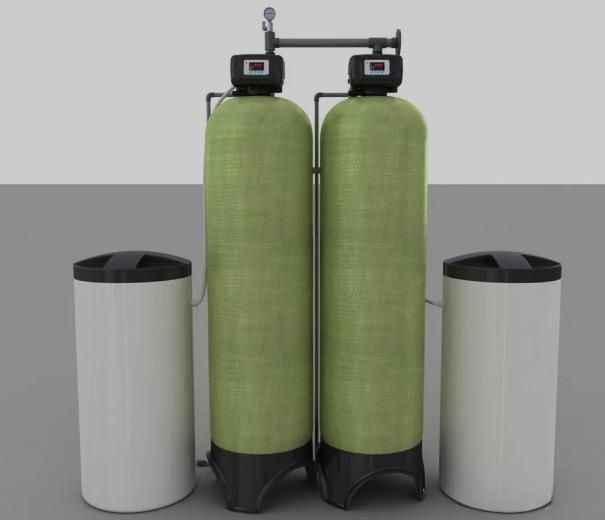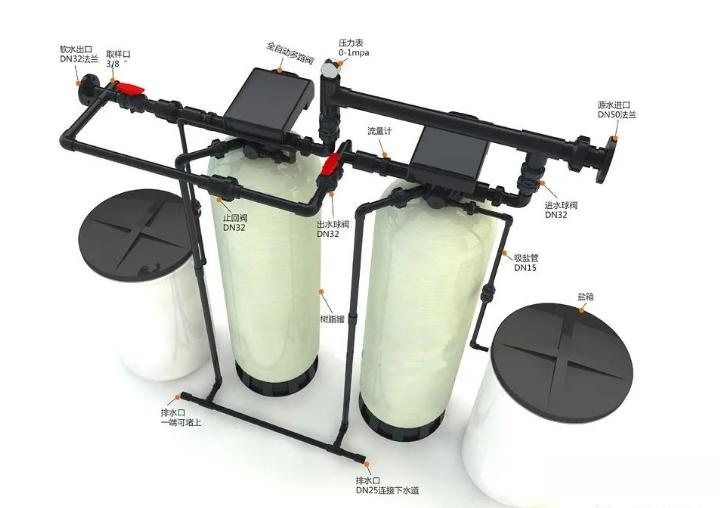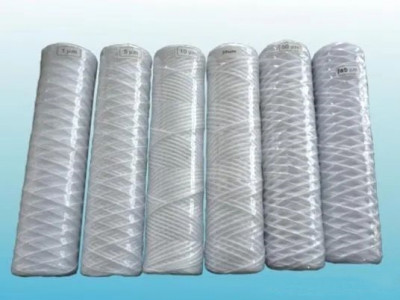Composition of pelican water softener system
1、Imported control valve: valve body material is high-strength lightweight corrosion-resistant engineering plastic, lead-free brass.
2、Corrosion-resistant tank: the tank material is glass fiber reinforced plastic (carbon steel or stainless steel lined tank can be used), the tank is anti-corrosion, pressure resistance, long service life.
3、Uniform water distribution system: using jet water distribution, the effective exchange capacity of resin can be given full play, with precise salt control, no salt pump.
4、Imported high-performance resin: strong acidic cation exchange resin is used, with low breakage rate and uniform particle size to improve the ion exchange rate.
The installation requirements of pelican water softener system
1, pelican water softner system should be installed in; solid cement platform, near the drainage ditch should be provided;
2, the installation of the salt tank should be close to the resin tank, and try to shorten the length of the salt suction pipe;
3, the ambient temperature should not be lower than 2℃ or higher than 5℃;
4、When the pelican water softener system is directly connected to the plus plant, a pipe section of more than 3 meters should be maintained and a check valve should be installed.
5. To facilitate the replenishment of the regenerate
6. There should be operating and maintenance space near the plant.
The filling of the resin of the pelican water softener system
1、Before filling, put the central tube (with water distributor) into the center of the resin tank at a stage lower than 0.5mm of the tank mouth and guide the angle (at this time, apply tape to seal the central tube mouth to prevent the resin from entering the central tube).
2、Put the resin into the resin tank along the aperture around the central tube and make it lay flat at the bottom of the tank.
3、Put the treated resin into the resin tank according to the specified filling amount along the central tube surroundings.
4、The above operation should keep the central tube in the central position of the resin tank mouth at all times.
5、Remove the sealing tape of the central tube.
6、After installing the water distributor, place the controller socket against the central tube and carefully turn the control valve in a clockwise direction (Note: During the installation of the control valve, make sure the central tube is inserted into the valve body) until the control valve is screwed onto the tank interface.
Piping connection of pelican water softener system
1、Pipe connection please refer to the relevant content of the local construction specifications;
2、Connecting the inlet and outlet pipes in accordance with the caliber of the controller;
3、Inlet and outlet pipes should be equipped with manual valves, bypass valves should be installed between the inlet and outlet pipes,
the outlet pipe throttle should be installed with a sampling valve, and the inlet pipe is recommended to be installed with a Y-filter; to prevent contaminants in the pipe from blocking the valve causing the equipment to fail to operate normally.
Pay attention to the same course of the inlet and outlet waterways when multiple systems are connected in parallel.
4, try to shorten the connection length of the drainage pipe, reduce the curvature, control valve polygons gutter polygons do not exceed 6 meters.
5, the drain pipe and drainage channel connection, must make the drain pipe and the drainage channel water surface distance to maintain a certain space to prevent sewage may be siphoned back to the water softener.
6, drainage pipes must not be installed in all types of valves;
7, brine pipe connection must maintain a good seal, otherwise it will affect the regeneration effect of the water softening plant.
8, each pipeline must be set up independent bracket, do not allow the gravity of the pipeline, stress transmission to the control valve.





